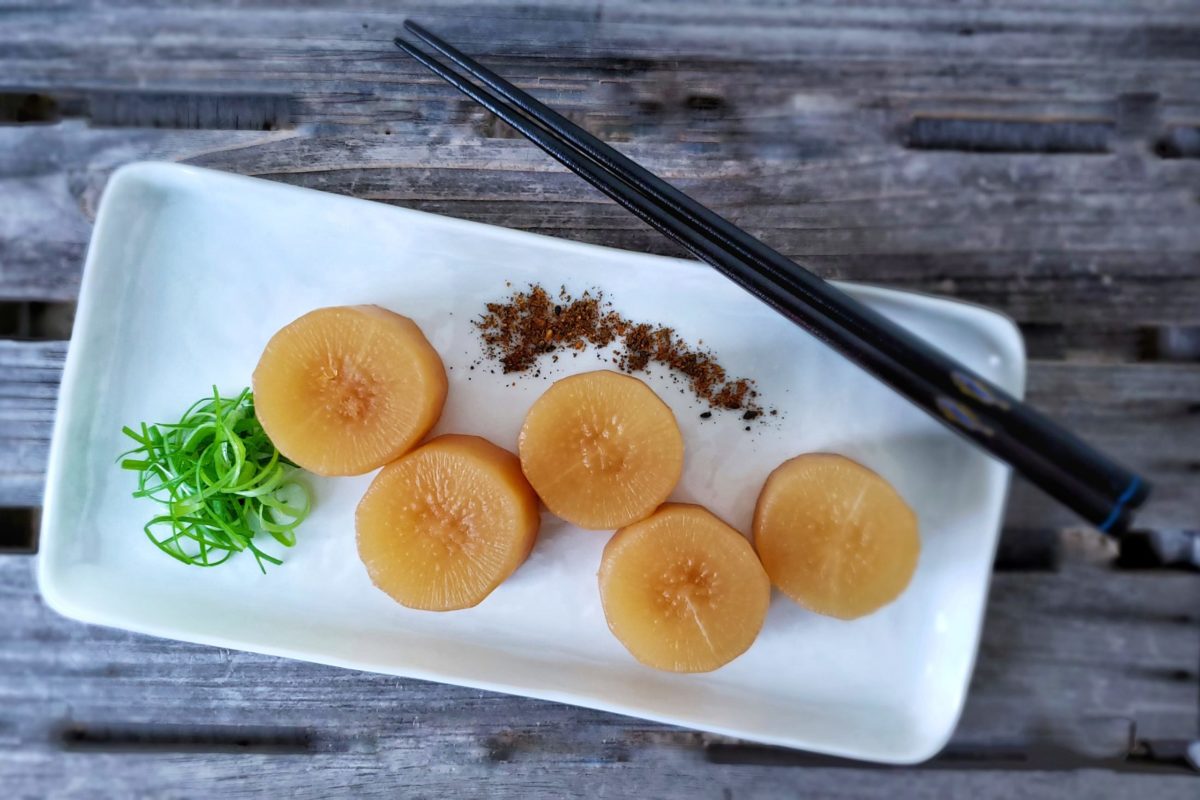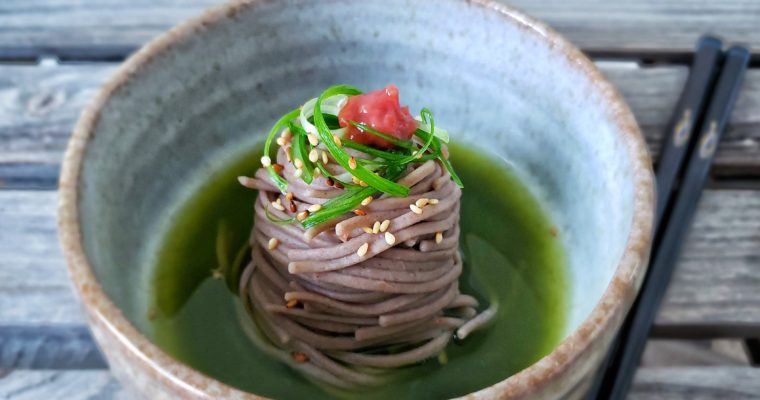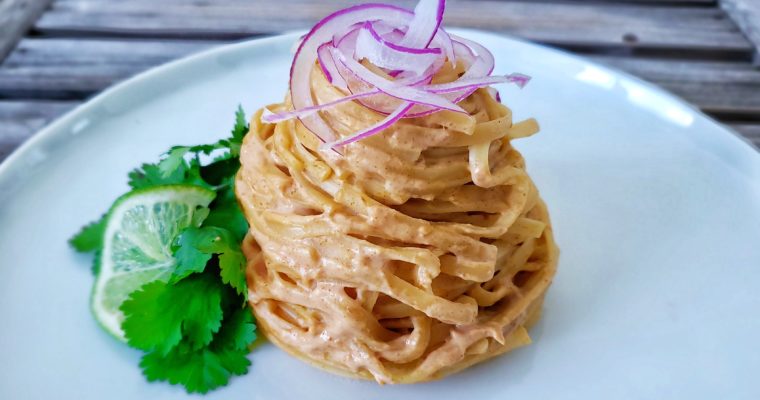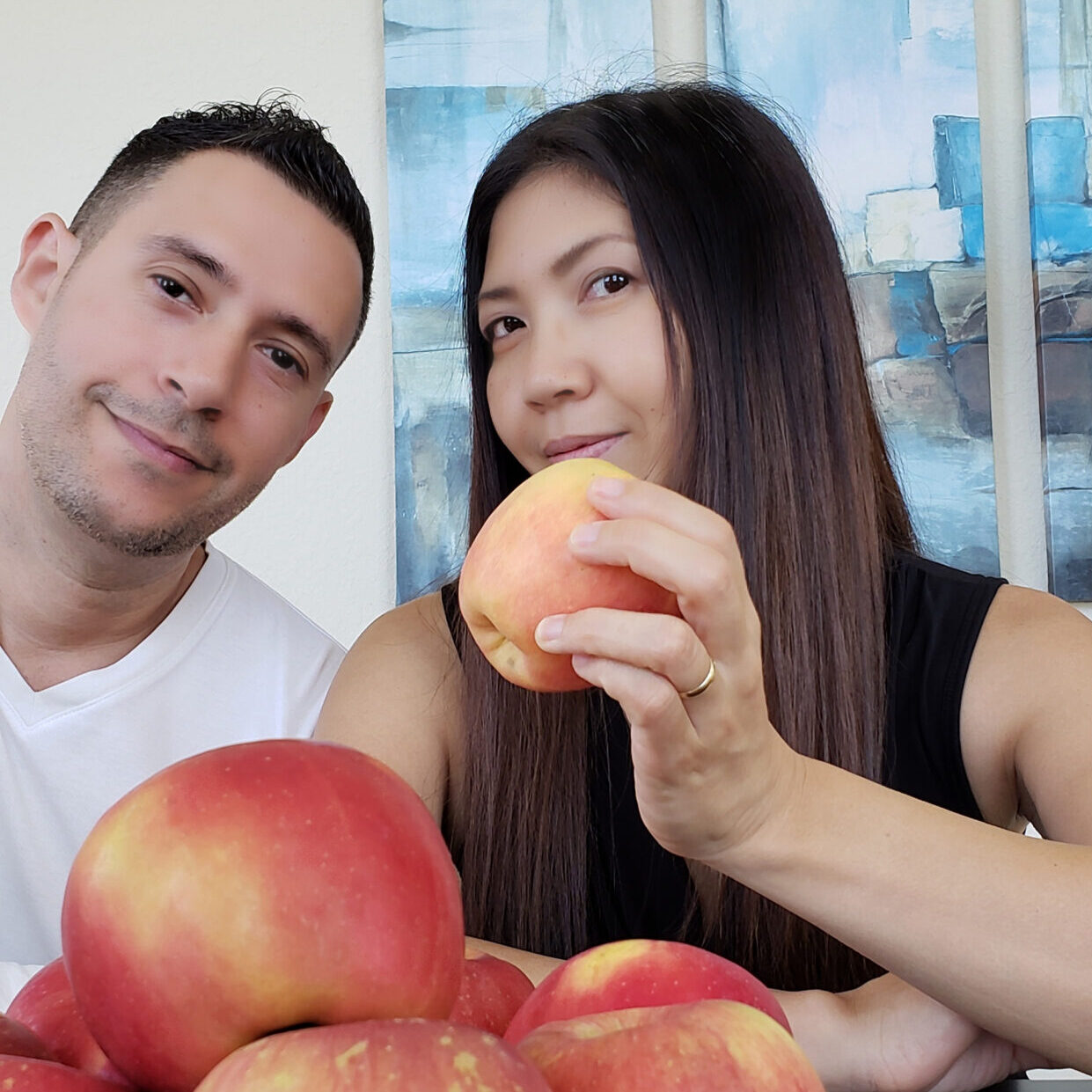Last Updated on June 3, 2023
Do you adore daikon radish or perhaps it’s the first time you heard such a name? Either way, try this Sweet & Savory Simmered Daikon Radish which is an authentic Japanese style dish made simple! It’s vegan and oil-free, healthy and easy way to try the flavor of Japanese cooking that is not sushi or tempura!
Daikon Radish
We’ve cooked many dishes with daikon radish. From the leaves to the root, the whole entire parts are edible so it produces less waste! You may be more familiar with small red radish, and probably never even incorporated daikon radish to your cooking. In case you’re wondering, it can go for both raw and cooked. Make sure to check out the other daikon recipes after reading this post!
Simmered Daikon Radish
This was a difficult one to come up with a proper name. In Japanese, it’s called Nimono [煮物] which is a style of Japanese cooking. It could be interpreted as “simmered or stewed things (=food).” For some reasons, they both don’t sound like a perfect translation for the nimono. We really are’t sure why, though. But in the end, we chose “Simmered” Daikon Radish.
In many cases, simmered food (or nimono) is cooked in soy sauce based liquid with dashi that gives a depth and a background umami taste. Some are simply savory while others are sweet & savory. Daikon can be sharp and spicy when it’s raw however cooked daikon becomes slightly sweet. So this soy sauce based sweet & savory taste complements very well with the natural sweetness of the daikon radish!
Now, we mentioned the use of dashi in nimono. For vegan cooking, you can use kombu sheets and/or dried shiitake for making dashi stock. However, when we make this dish, “keeping it simple” was the goal so no stock (dashi) was used for this particular recipe. The result is very easy to make with minimum common ingredients that are accessible to most people!
- Daikon Radish
- Water
- Soy Sauce
- Mirin
- Sugar
- Salt
That’s all the ingredients. Pretty simple, right?
Sake and Mirin
People often ask us if they can skip sake or mirin and the answer is 50/50. For us, those two ingredients are pantry staples so we always have on hand but we understand that’s not the case for many people. If you have sake only, use it combined with sugar. If you have mirin only, use it for sure. To skip both, it will be missing the hint of sake-like background flavor…so try to use at least one of the two.
Sake adds a hint of sweetness and very subtle background flavor. Also, if you are cooking with something that has a strong smell (like fish or meat…), sake will also reduce and mellow it out.
Now, mirin is very similar to sake but mirin has more sweetness and seasonings in some cases. Mirin adds some sweetness, sake-like background flavor, and gloss (perfect for making teriyaki.)
Here is what most people aren’t aware of. Did you know that mirin has a few different types?
- True Mirin — (hon mirin) [本みりん]
-
- Traditional / Aged
- Made with glutinous rice, rice koji mixed with brewing alcohol
- Mirin-Like Seasoning — (mirin-fu) [みりん風調味料]
-
- Blended
- Made with sweetner, rice, rice koji, acidulant, and other seasonings etc.
- Rice Cooking Wine — (ryori-shu) [料理酒]
-
- Fermented or blended
- rice, rice koji, sweetner, alcohol, and salt etc.
Most likely the mirin you have in your pantry is not traditional mirin, rather rice cooking wine! Traditional mirin is hard to find here so the one we use is the Rice Cooking Wine type of mirin from Eden Foods. Some Mirin-Like Seasoning are made with unwanted ingredients like high fructose corn syrup. Be sure to read the label before you buy!
Flavor Tips
Any Simmered food (Nimono) tastes better the next day because flavors settles as it cools down in the fridge. It tastes delicious when you serve immediately, and leftovers are even better!
If you like a little heat, spice up with Japanese shichimi pepper. Also, it’s best served with a bowl Japanese rice.
Feeling Inspired?
Try those daikon radish recipes that you can incorporate every part of it!
Sweet & Savory Daikon Dadish Leaves
Daikon Radish Salad with Umeboshi Paste
Quick Sauteed Daikon Leaves & Peels
Sweet & Savory Simmered Daikon Radish
Ingredients
- 1 pound daikon radish roots peeled and cut into 1-inch thickness rounds
- 2 cups water (for step 2)
- 2 tbsp soy sauce
- 1 tbsp mirin
- 1 tbsp sugar
- 1 tsp salt
- Shichimi pepper (optional)
- Thinly sliced scallion (optional, garnish)
Instructions
- In a medium pot, place daikon radish and pour water to cover the surface. Put a lid on and bring it to boil on medium high heat Once it’s boiling, reduce the heat to medium to medium low. Cook for 15-20 minutes until the center of the daikon is almost translucent and slightly tender, not mushy. Scoop them out of the water (drain) and set aside.
- Use the same pot, add water, soy sauce, mirin, sugar, and salt. Uncover the pot and bring it to gentle simmer. Mix well and reduce the heat to medium low.
- Transfer the daikon into the pot and submerge them in the sauce. Cover again and gently simmer for about 25-30 minutes until the daikon absorbs all the flavors.
- Serve immediately or let it cool down and store in the fridge and serve later. Sprinkle shichimi pepper for some heat (optional.) Garnish with scallions (optional.)
Notes
- It’s better served with Japanese rice (starchy short grain rice.)
- The taste gets better and the flavor settles as daikon cools down in the fridge. Reheat it to serve later.







Hi, how long can we keep this in the fridge? Thanks
Hi Elisa,
I’d say it should taste fine (fresh) for 2-3 days of keeping in the fridge. That said, when I make one, I typically eat it over the course of a week.
If I make a lot, I divide into small portions then store in an airtight container and keep in the freezer. When you’re ready to eat, defrost overnight in the fridge (it doesn’t taste the best but still good.) Hope that helps!
Akiko
Hi Akiko, it’s SO good that I finished it in 2 days anyway, lol. Thanks for this recipe! I’ve always love Daikon but I’ve been wondering about other ways of preparing it except for soup. I’m glad I found this recipe!
Thank you, Elisa. I’m so glad that you enjoyed it!
Actually, I just realized that your comment was for the “Sweet & Savory Simmered Daikon Radish.” For some reasons, I was mistaken for the other recipe “Sweet & Savory Daikon Radish Laves.” So, I’ve never frozen the simmered daikon…Now I’m VERY happy to know that you finished in 2 days since I’m not sure how frozen simmered daikon would be like. LOL.
Anyways, I’ll create more daikon radish recipes when they are in season 🙂
LOL, Now, I’m intrigued about the radish leaf. Another question about the daikon dish. Does the final product come with sauce or not? Once I’m done with the last step of simmering, I still have the sauce in the pot. Do I keep the daikon with the sauce in the fridge? Or do I drain them? Thank you!
When it’s done (at the last step of simmering), it should have some sauce left in the pot (more like thin & soupy consistency.) I just didn’t serve it with the “sauce” because of the flat plate that I used for the picture as you may have seen in the photo.
That said, you can serve it either with or without the sauce which is completely up to you. If I had an appropriate small size shallow bowl to present the final product at the time I made the recipe, I would’ve certainly served with the sauce. Actually, it tastes good enough to slurp as you may have already tried so.
Here is a tip for Japanese simmered dishes. Generally, simmered dishes really absorb the flavor from the sauce (the soupy liquid) in the process of cooling down and resting cold in the fridge. So, you definitely want to submerge the daikon in the sauce when you keep in the fridge. As a matter of fact, it tastes much better the next day even at a cold temperature. Also, it’s totally normal to serve simmered dish as cold or at room temperature. Of course, reheating is great, too.
I hope that makes sense 🙂
Akiko
Yes it explains everything! Thanks again ♥️ just made my 2nd batch!